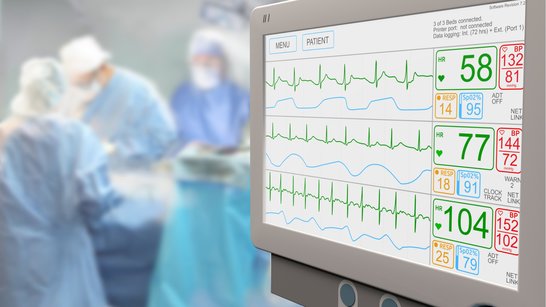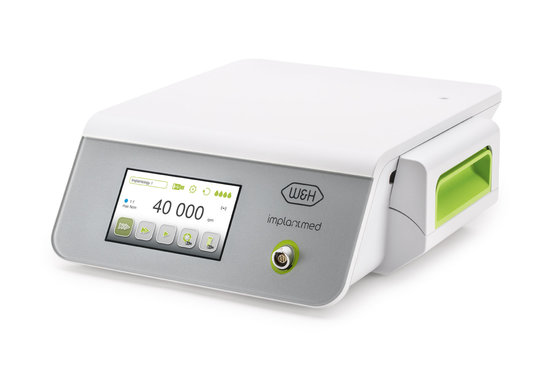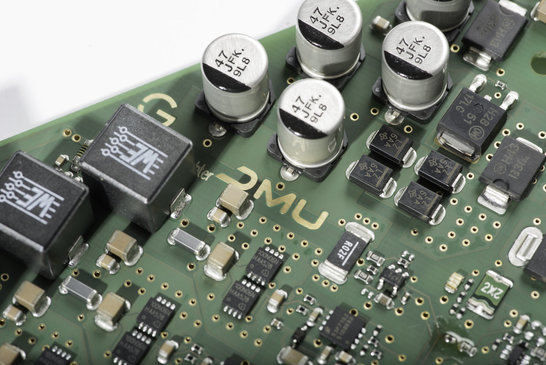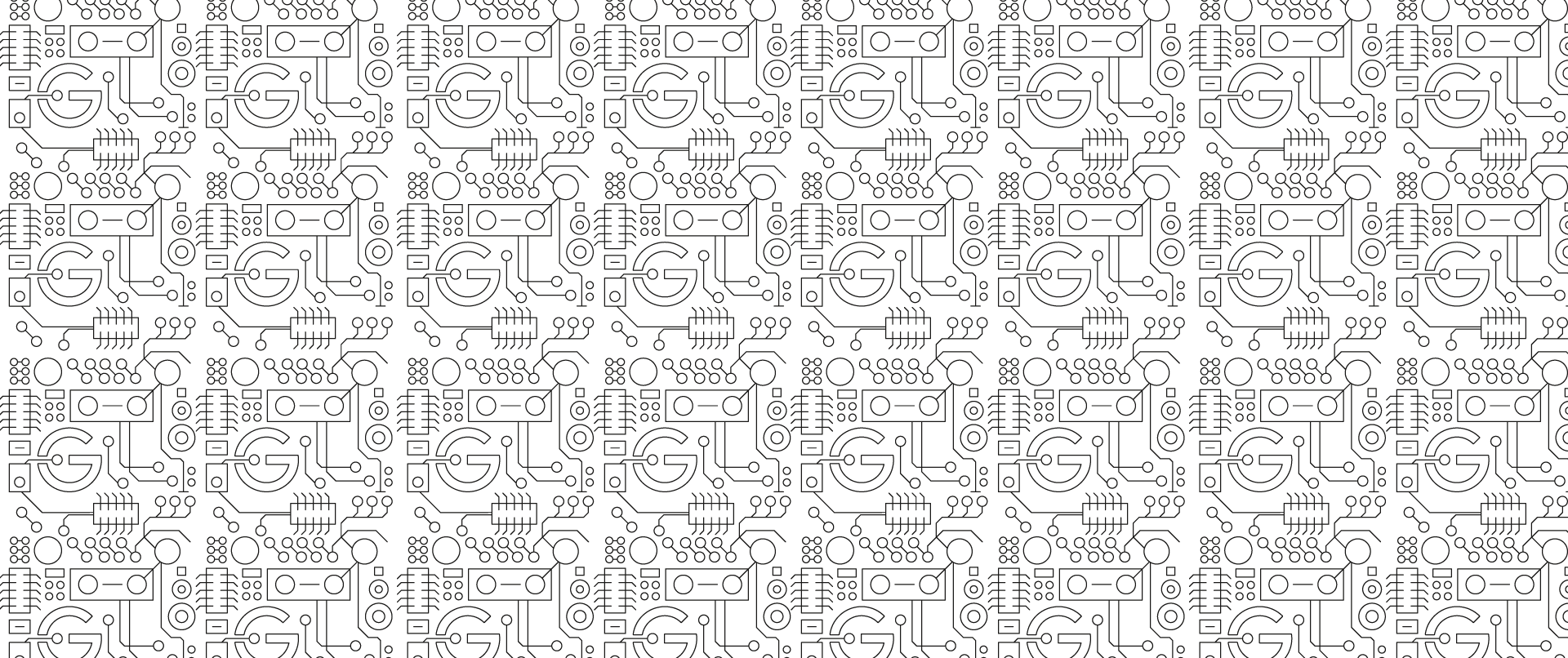Special
Healthy Embedded - Embedded systems for medical technology
Medical technology is one of the key technologies of the 21st century. Nowadays, it is impossible to imagine medicine without electronics and embedded systems.

Healthy Embedded
Whether as wearables on the body, heart-lung machines in hospitals, diagnostic devices, laboratory equipment or treatment devices for dentists. Electronics and software are ubiquitous. The great progress in medical technology increases the quality of healthcare and reduces the costs for medical management.
Electronics and embedded systems are core components of today's medical technology, reduce costs and enable completely new areas of application. Design, development and production of embedded systems and electronics in medical technology require know-how in many disciplines.
Medical technology knowhow
Standards and certification
The use of technology in medicine requires strict measures to exclude malfunctions and to permanently ensure quality. These measures must be adhered to and documented throughout the entire product life cycle. It begins with the specifications and continues through development to the discontinuation of the product. Medical technology systems must not pose a risk to life and limb. For this reason, many standards and regulations must be taken into account for the development of medical technology devices. Before the devices are used, they undergo numerous certifications. Over the life cycle of a medical technology product, the quality of the production and the product are continuously monitored by authorities and authorized institutions.
Some important medical device guidelines and standards that developers need to be aware of are:
- Medical Device Regulation MDR of the EU
- IVDR - In-vitro Diagnostic Device Regulation of the EU
- EN ISO 13485 - Management system for design and manufacture of medical devices
- EN 60601 - set of standards on medical electrical equipment and systems
Easy operation and optimal use
Simple, intuitive and error-free operation is important in medical technology. Last but not least, the user interface is also an important design element of a device and a basis for decision-making for the potential buyer. Optimal user experience increases acceptance and reduces the learning effort as well as the user's susceptibility to errors.
In critical environments, such as treatment rooms or laboratories, care must be taken to ensure that HMI user interfaces and switching elements are kept germ-free. Today, the operation of medical devices is simplified by means of voice input and output. Artificial intelligence supports their use, for example by making suggestions for the interpretation of images or measurement results in diagnostics and relieving the user of the burden of making important decisions.
Measurement technology, sensors and actuators
A wide range of sensors are used in medical technology to record vital data or analyze substances in laboratories. Pulse, blood pressure or body temperature can be recorded directly on a patient's body. Using complex spectroscopic methods, the composition of tissues and fluids can be determined in a laboratory device. The technical challenge here is very often the continuous acquisition and processing of minute signals in interference-prone environments. Extensive experience with analog technology and digital signal processing is an important tool for the developer. Optical systems are often integrated with the electronics, which in turn requires specialized knowledge.
For all measurements on the body of a patient, the highest possible safety standards must be observed. This naturally also applies to active intervention by a medical device. The actuators used, such as pumps for transporting body fluids or drives for drilling or cutting bones or tissues, must function reliably. The developer of a medical device must ensure and demonstrate that its use on the patient can be performed with minimal risk.
Mobility, energy management and computing power
Increasing miniaturization and computing power of electronics and embedded systems today enable medical devices that are small and compact to collect data and make control decisions directly on the patient. Microcontrollers with minimal power requirements are combined with sophisticated energy management for long-lasting, battery-saving operation. Pacemakers today can operate for up to 10 years on a single battery. The computing power of the processors used enables extensive signal preprocessing and evaluation, up to and including the use of algorithms from the fields of machine learning and artificial intelligence.
Developers of medical devices must be as familiar with battery technology and its safe application as they are with the possible energy-saving levels of different microprocessors. The use cases of the device must be analyzed precisely in order to calculate an exact energy balance.
Connectivity and Security
In medicine, too, we are experiencing a digital revolution that is fundamentally affecting all areas of life and the economy. Medical devices are becoming increasingly intelligent and rarely run in isolated operation. Vital data from patients and diagnostic data from laboratories are seamlessly transmitted to medical IT systems and analyzed. Different network and wireless standards are used, and the integrity and security of the data must be guaranteed at all times. Patient data is extremely sensitive and the highest data protection standards must be considered for this. Devices are operated with medically certified cloud systems. Data transfer is encrypted and secured. Manipulation and unauthorized access must be prevented.
The development of modern medical devices therefore requires expertise in network technology, network security and encryption.
Safety and reliability
Medical devices must function permanently and reliably. The risk of malfunctions during operation must be minimized as early as the development stage. To this end, comprehensive risk analyses must be carried out on an ongoing basis. Based on these analyses, measures are derived to further minimize potential threats. Redundant systems, sophisticated monitoring functions in hardware and software, and modules that meet the prescribed standards are used. Furthermore, the long-term maintenance and care of a medical device must be ensured over its entire life cycle in order to guarantee the highest possible security on a permanent basis.
Special requirements are also taken into account for the materials used in the medical environment. Surfaces, buttons or touch displays should be disinfectable. Some components must be able to withstand a certain number of sterilization cycles in an autoclave without damage over their lifetime. Biocompatible or breathable materials must be used in contact with the patient.
The developer of medical devices should always focus on safety and be familiar with the necessary regulations and procedures.
Stability over many years
In order to create a robust hardware and software platform for series production, the expenses for integration, ongoing maintenance and expansions must be considered from the very beginning and over the entire product life cycle. Despite rapidly changing demands, medical technology requires a long service life for its devices. Changes in hardware or software entail lengthy approval procedures. Even during device design, care must be taken to ensure that durable components, preferably from multiple sources, are used and validated. The embedded software must be designed to be extremely stable, fault-tolerant and robust. Updates, e.g. for new threat scenarios or for new functions, must be able to be imported quickly and securely. In any case, beyond development, a long-term stable partnership with the development partner is essential.
Examples from practice
Ginzinger electronic systems offers complete solutions for the development and production of electronics and Embedded Systems for medical technology. The company is certified according to EN ISO 13485. Some examples of solutions:
W&H Dentalwerk Bürmoos GmbH
Embedded Linux in dental medicine
The electronic components and complex assemblies in W&H dental equipment must be mass-produced and assembled according to the strict standards of medical technology norms.

DMU GmbH
Innovative mini 5-axis milling machine
For the rapid series production capability of a milling electronics, DMU GmbH from Salzburg commissioned Ginzinger electronic systems with the optimization and integration of the electronic components.

